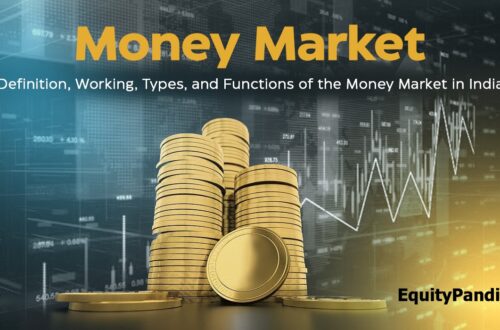Back in my early twenties, right after landing my first real job, I remember staring at my paycheck wondering where to stash the extra cash without tying it up forever. The stock market seemed too wild, like betting on a horse race, so I turned to a money market account at my bank. It wasn’t flashy, but it earned a bit of interest while keeping my money ready for that surprise car repair. That’s the beauty of the money market – it’s the financial world’s quick-stop shop for short-term needs, where safety and accessibility reign supreme. In this deep dive, we’ll unpack what the money market really is, how it ticks, and the key instruments that make it hum. Drawing from real-world examples and up-to-date insights as of 2025, whether you’re saving for a rainy day or managing business cash flow, this guide will equip you with the knowledge to make smarter moves.
What Is the Money Market?
The money market is essentially a corner of the financial system dedicated to short-term borrowing and lending. It deals with debt instruments that mature in under a year, offering high liquidity and low risk for participants like banks, corporations, and governments. Unlike the stock market’s ups and downs, this one focuses on stability, helping entities manage cash surpluses or deficits efficiently.
It’s a wholesale arena where trades often involve millions, but retail investors access it indirectly through accounts or funds. In 2025, with interest rates hovering around 4-5%, it’s a go-to for preserving capital amid economic uncertainties.
Defining the Money Market Simply
Picture it as a marketplace for “near-money” assets – things you can turn into cash fast without losing value. It’s where short-term loans happen, backed by secure instruments, ensuring quick fund access. This setup contrasts with long-term capital markets like bonds or stocks.
From my experience dipping into it during volatile times, it’s like a financial buffer zone, providing peace without the thrill of high returns.
Key Features of the Money Market
High liquidity tops the list, meaning you can buy or sell without price swings. Low default risk comes from top-rated issuers, and short maturities keep interest rate exposure minimal. Transactions are often over-the-counter, adding flexibility.
In today’s environment, with digital platforms, it’s more accessible than ever for everyday folks.
How the Money Market Works
This market functions through a network of lenders and borrowers trading short-term debt. Banks might lend excess reserves overnight, while corporations issue paper for quick cash. Rates are influenced by supply, demand, and central bank policies, like the Fed’s funds rate.
Daily volumes reach trillions, ensuring the economy’s wheels stay greased. It’s all about balancing immediate financial needs without long commitments.
The Role of Participants
Banks dominate as intermediaries, borrowing to meet reserves or lending surpluses. Corporations use it for working capital, governments for deficit funding. Investors, including individuals via funds, seek safe harbors.
Mutual funds pool money to buy these instruments, democratizing access. Everyone plays a part in maintaining liquidity.
Influence on the Economy
It helps central banks control money supply through operations like repos. Stable rates here ripple to loans and mortgages, guiding growth. During crises, like 2008, freezes highlight its critical role.
In 2025, with steady rates, it’s supporting recovery post-inflation spikes.
Types of Money Market Instruments
Diversity defines these tools, each suited for specific short-term goals. From government-backed bills to corporate paper, they offer low-risk ways to earn modest yields. Common ones include T-bills for safety and CDs for fixed returns.
Understanding types helps match your needs – liquidity versus yield. Let’s break them down.
Treasury Bills (T-Bills)
Issued by governments, these are short-term debts sold at a discount, maturing in weeks to a year. You earn the difference as interest, backed by full faith credit, making them ultra-safe. In the U.S., they’re auctioned regularly.
I once used T-bills during a market dip – the reliability eased my worries.
Certificates of Deposit (CDs)
Bank-issued time deposits with fixed rates, maturing in months. FDIC-insured up to $250,000, they’re low-risk but penalize early withdrawals. Rates in May 2025 hit up to 4.5% for short terms.
Great for locking in yields when rates fall, as I’ve done for emergency funds.
Commercial Paper
Unsecured notes from corporations, maturing in 1-270 days. Sold at discounts to high-credit firms for operations funding. Higher yields than T-bills but slightly riskier.
Big names like Apple use them – efficient for payroll without collateral.
Repurchase Agreements (Repos)
Short-term loans where securities are sold with a buyback promise, often overnight. Collateralized by treasuries, they’re key for liquidity. Central banks use them in policy.
Think of it as a pawn shop for finance pros – quick cash with assets as pledge.
Bankers’ Acceptances
Bank-guaranteed drafts for trade, maturing in 30-180 days. Used in imports/exports, traded at discounts. Reliable for global deals.
They reduce payment risks, smoothing international business.
Eurodollars
Dollar deposits in foreign banks, outside U.S. regs. Offer higher rates, short maturities. Popular in London for multinationals.
They show the market’s global reach, bypassing domestic rules.
Functions of the Money Market
Beyond trading, it provides liquidity to prevent cash crunches. It channels surplus funds to deficits, boosting efficiency. Influences broader rates too.
Central banks rely on it for policy transmission. It’s the economy’s short-term lifeline.
- Ensures quick cash access for emergencies.
- Funds trade via bill discounting.
- Supports industries with working capital.
- Helps banks invest reserves profitably.
- Aids monetary control by central banks.
Liquidity Provision
It lets institutions borrow or lend swiftly, maintaining system stability. Banks meet reserves overnight, avoiding disruptions.
During 2008, its freeze showed how vital this function is.
Short-Term Financing
Governments cover deficits, firms handle operations. Low costs make it attractive versus long-term debt.
My small business friend uses it seasonally – keeps things flowing without equity dilution.
Interest Rate Influence
Benchmark rates here guide loans economy-wide. Fed adjustments propagate fast.
In 2025, stable rates are curbing inflation effectively.
Comparing Money Market vs. Capital Market
Money markets focus on short-term liquidity, capital on long-term growth. Former is low-risk, latter volatile with higher potential returns.
Both complement each other in the financial ecosystem.
| Aspect | Money Market | Capital Market |
|---|---|---|
| Maturity | Under 1 year | Over 1 year |
| Risk | Low | Higher |
| Instruments | T-bills, CDs, Commercial Paper | Stocks, Bonds |
| Purpose | Liquidity | Funding expansion |
| Returns | Stable, low | Variable, potentially high |
| Participants | Banks, Corps short-term | Investors long-term |
This highlights their distinct yet linked roles.
Pros and Cons of Money Market Investments
Pros: High liquidity for quick access; low risk with guarantees; better than savings yields; diversification option.
Cons: Returns may not beat inflation; some uninsured; limited growth; fees can erode gains.
Pros and Cons of Money Market Funds vs. Accounts
Pros of funds: Higher yields potentially; professional management; easy diversification.
Cons: Not always FDIC-insured; can “break the buck” rarely; management fees.
Advantages and Risks of Money Market Instruments
Advantages shine in safety and flexibility, ideal for conservative strategies. They offer predictable income in uncertain times.
Risks include low yields eroding purchasing power, interest rate shifts, and rare defaults on unsecured paper.
- Safe haven during volatility.
- Quick conversion to cash.
- Supports economic stability.
- Modest but steady earnings.
Humorously, it’s like the reliable old car – not exciting, but gets you there safely.
People Also Ask
Pulling from common searches, here are real questions about money markets and instruments, with straightforward answers.
What are money market instruments?
They’re short-term debt tools like T-bills, CDs, and commercial paper, used for liquidity with low risk.
What are the types of money market instruments?
Key ones include Treasury bills, certificates of deposit, commercial paper, repos, bankers’ acceptances, and Eurodollars.
How do money market funds work?
These mutual funds invest in short-term debts, aiming for $1 share price while yielding income, often safer than stocks.
Are money market accounts safe?
Yes, typically FDIC-insured up to $250,000, making them low-risk for deposits.
How to Invest in Money Market Instruments
Start by opening a money market account or buying funds. For direct access, use brokerage for T-bills or CDs.
Research yields – in 2025, online banks offer competitive rates around 4.4%.
Where to Get Money Market Investments
Banks like Ally or Capital One for accounts; TreasuryDirect.gov for T-bills. Brokers like Vanguard for funds.
Credit unions often beat big banks on rates.
Best Tools for Tracking Rates
Apps like Bankrate compare yields; NerdWallet for reviews. Use Mint to monitor portfolios.
Excel works for personal tracking simplicity.
The Global Reach and Future of Money Markets
Internationally, markets like Eurodollars link economies. In 2025, digital advancements are speeding trades, enhancing access.
Future trends point to greener instruments, aligning with sustainability.
FAQ
What is the main difference between money market and capital market?
Money market is short-term, low-risk for liquidity; capital is long-term for growth with higher risks.
What are the benefits of money market instruments?
They offer liquidity, safety, and modest returns, ideal for short-term needs.
Are there risks in money market investments?
Minimal, but include inflation erosion and rate changes; uninsured ones carry default potential.
Where can I find the best money market rates in 2025?
Check sites like Bankrate; online banks often top at 4.4-4.5%.
Why invest in money market funds?
For stability and income without stock volatility – perfect for parking cash temporarily.





